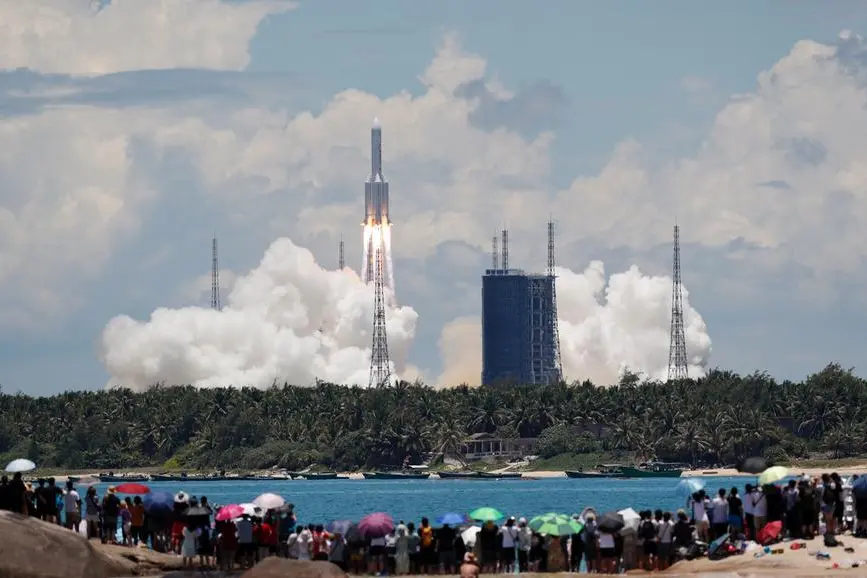PHOTO
China's Long March 12, capable of sending bigger satellites with more functionalities into the Earth's orbit, is expected to make its debut flight in 2024, in a year of record launch missions for the country, state media reported on Monday.
Propelled by six liquid oxygen-kerosene-fueled engines, the Long March 12 will be able to transport a payload of 10,000 kg (22,000 pounds) to a low-Earth orbit, according to the Shanghai Academy of Spaceflight Technology, a subsidiary of China's main space contractor.
That means the Long March 12 would be able to transport half a dozen large communication satellites into orbit on one mission, putting it almost in the same category as the heaviest variant of the Long March 3, which is used to launch the satellites of China's homegrown BeiDou navigation system.
A small-lift rocket carries payloads of up to 2,000 kg, while medium ones deliver up to 20,000 kg and heavy rockets can carry payloads in excess of 20,000 kg, capable of sending probes to other planets.
China has developed and launched more than 20 types of Long March-series rockets - the pillar of the country's space programmes and responsible for over 500 launch missions since 1970.
China Aerospace Science and Technology Corp, the country's main space contractor, is expected to conduct a record 100 launch missions in 2024. Chinese commercial companies are also expected to step up launches this year.
The Long March 12's inaugural flight has been scheduled at the Hainan International Commercial Aerospace Launch Center, a spaceport expected to start operations in June, said Zeng Wenhua, a structural designer at the Shanghai Academy of Spaceflight Technology.
The Long March 12 will be the first Chinese rocket with a diameter of 3.8 metres - wider than the 3.35-metre diameter of most Chinese rockets — and will have two stages. It will stand over 60 metres tall (196 feet).
(Reporting by Ryan Woo; Editing by Sharon Singleton)





















